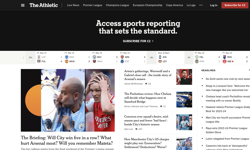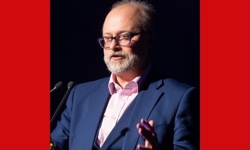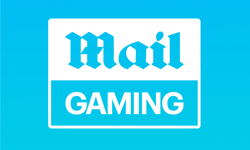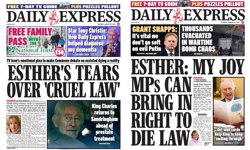‘Information wants to be free’ was the rallying cry of the internet pioneers. But now, a decade on from those revolutionary days, publishers are increasingly charging for at least some of their content. A recent census from the Association of Online Publishers (AOP) showed 58% of publishers now charge for some online content, and half the rest plan to do so in the next twelve months. Ian Price, CEO of BT Click & Buy, says, "I’m now seeing people making quite a success out of charging for content online. It’s moved on a hell of a lot in the past eighteen months."
Most sites were originally free. Then a few sites, such as the Wall Street Journal, went pay-only. Some early attempts to introduce paid-for content scored own goals – John Weir of Future Publishing mentions the Irish Times, which "slammed site charges on, and lost traffic", while converting only a quarter of a percent of its users to paid-for status. As Alexandra White, head of AOP, points out, the model has moved from subs-only sites to "a tiered approach with different layers of paid-for services" specifically to avoid damaging traffic. She holds up Emap publication Total Telecom Online as an example of how to move to paid content successfully; it now has 24,500 paid users and 95,000 registered, so about 20% of all users are paying.
There are other successes. IDG experienced plummeting traffic when Macworld and PC Advisor started locking off paid-for content – but within months, site visits were back to previous levels. And traffic levels at FT.com continue to increase. Meanwhile, John Weir says that even though his magazines have only recently moved to charging for content, "we haven't seen any dip in visits as yet."
Future Publishing’s magazine sites have a mix of roughly 80% free and 20% paid-for content, though John Weir thinks that the paid-for proportion will gradually increase. The Independent has a slightly higher degree of paid-for content, which Richard Withey, global director for interactive media at Independent News & Media Group, puts at 30%. That seems to be a fairly common mix.
Free content as bait
Critical to success with the tiered approach is a high quality and quantity of free content to attract potential customers. Richard Withey says "If you want to charge for going in the sweetshop, you don’t get many people going in the sweetshop." In fact, there should not be a conflict between high traffic levels and strong content revenues – free content is the marketing for the paid-for side.
The decision on exactly what to charge for is a difficult one. Annelies van den Belt, digital director of Times Newspapers, described her criteria for chargeable content to a PPA Interactive/AOP conference last year as being "unique, valuable, non-commoditised, interactive, non-cannibalistic" – quite a tall order. It certainly has to be unique. As Alexandra White says, "what no one wants to do is put a pay-for barrier in front of stuff consumers can get elsewhere for free".
Narrow and deep
For some magazines that’s easy to do. John Weir says that his magazines are "narrow and deep" with "very specialised information" such as computer tutorials. Both the FT and Economist have always charged for much of their content; the FT started charging in 2002 and by the start of 2004 had 74,000 digital subscribers at £75 (£200 for the premium service) a year. Again, they have unique content aimed at a specialised market.
Other publications have more difficulty defining successful paid-for content. Ben Mein, senior digital planner at News International, says that "the defining factors are that it’s valuable to the user, exclusive, and tied to a strong brand." But a lot of breaking news is available elsewhere, for instance on BBC Online, considered by many in online publishing as an unfair competitor. So newspapers have to pick particular things that are of value, such as richer media, archived content, or interactivity. The red tops are selling horoscopes, and crosswords do well for most of the broadsheets, while fantasy football has done well at both the Times and the Sun.
Meanwhile the Independent sees its columnists, particularly Middle East expert Robert Fisk, as "sub-brands", according to Richard Withey, so the subscription packages are put together around them.
Mike Seery, CTO at Economist.com, believes that the key to defining paid-for content is often the way in which people use the web for different purposes than the print medium. "There’s this sense that the website offers more than the paper version for some people. They fulfil different needs." Web users are often researching a particular topic rather than browsing, so that paid for archive or database content has a premium over breaking news.
Impact on revenues
All this paid for content is – at long last – beginning to have an impact on revenues. Media websites were originally 100% ad funded – where they weren't loss making. Now the revenue mix is beginning to reflect the advertising / cover price mix of the print media.
Ian Price says that most of his customers are getting 20-30% of their revenue from paid-for content. Ben Mein and Richard Withey both back this up – and expect this proportion to grow. Richard Withey says "I’d like the mix to be more like the broadsheet print mix of 40% cover price and 60% advertising support; that feels like a healthy mix to me." While Future Publishing is still 99% advertising supported, John Weir targets a 30% contribution from paid-for content in the medium term.
Most print media promote their web sites generically rather than promoting the paid-for content specifically, whether through email newsletters – particularly successful in business to business media – or through promotion in the print medium. It seems most successful where readers are pointed to particular items of content – for instance, Ben Mein mentions newspaper supplements referring readers to the web for extra information.
Facilitating purchase
Once users are on the site, getting them to buy premium content is the next task. Ian Price believes some publishers do themselves no favours here. For him, online content is just another form of online retailing, and the same usability issues apply. "They decide to charge for something and then they bury it deep within their site. Or they make it difficult to pay." The Independent addresses this with an editor’s choice box, which points to interesting content even if it is buried deep in the site. (Withey points out that this isn't just a practicality – the values used in making the choice are journalistic ones, key values for the Independent’s branding.)
One of the factors that has helped paid-for content thrive has been the increasing variety and robustness of payment mechanisms, with phone billing and reverse SMS billing (through companies like BT Click & Buy and m-till) joining credit cards as methods. An original focus on micropayments may have proved misleading. As Mike Seery says, "one of the things that people got hooked up on in the early days was how we sell individual small pieces of content. Well, you can sell one article, but you can bundle them up and sell five or ten. That’s a higher value transaction," moving from a volume to a value based approach.
At the same time, Ian Price says, "subscription is becoming more important. The combination of pay-per-view and subscription needs to be flexible." For instance, the Independent has a number of subscription packages as well as pay-per-view, and users can upgrade from one package to two at a discounted rate. Chris Flook, publisher at Reed Business Information, also believes a blend of different subscription models is important in getting maximum leverage. BT’s statistics bear this out - 30% of customers who buy single articles eventually move on to a subscription basis.
Laggards
Although the trend to charging for content is the same across all print media, there are a few laggard areas. Generally, the tabloids haven’t been as quick off the mark as the broadsheets – which Ben Mein puts down to the readership. "The broadsheets’ readers’ tenure online has been six years plus and they have no problem paying for things online. The tabloids hit a different area of the market, C1-C2, where people have been online less than two years." But he thinks from now on tabloids will be doing a lot more.
Local papers have also been laggards in charging for content. Elizabeth Hammond, head of digital media for Newsquest Sussex, admits that they are not yet offering pay-per-view content. Few other local papers have much chargeable content. Hammond believes that with most content management systems having been installed some while ago, there are technology hurdles to be surmounted; but she expects most local papers to be charging for content within a year or so.
Everyone is agreed that online paid-for content is a growth area. But there are changes ahead. Broadband sounds like a blessing for online publishing – but Ben Mein points out that "one thing it will do is make people experience more sites in their time online surfing." Ian Price, too, believes that "people will be promiscuous… they will just dip in and out of things." That puts the onus on the publisher to define its brand tightly and make its site as sticky as possible.
The boundaries between media will start to break down, too. John Weir says that "Future now sees itself as a content provider, rather than just a magazine publisher", and foresees TV channels developing around magazine titles. And while most print media have spawned web sites in the past, successful online publishers like Walking World are now spawning print media – though admittedly, so far only an annual magazine.
The internet audience is out there, and it is not going to go away. It has its wallet open for paid-for content. And though as Ben Mein says, "newspapers aren't going away – the newspaper is the key brand", increasingly consumers will want to access content via the web rather than on the printed page. George Yates of m-till tells potential customers for his payment systems - "you gotta be there or be square". And in the end, you might have to be there, or accept a slow and inevitable decline.
FEATURE
Marketing paid for content
Media web sites have evolved from a simple “pay” or “free” scenario to a more sophisticated tiered approach where paid and free sit comfortably alongside. Indeed the free content is seen as the marketing for the paid-for content. Andrea Kirkby assesses the trends.










